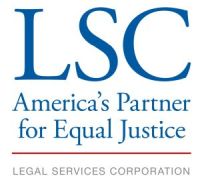Filter your results
Results 1 - 10 of 19. To narrow results enter search keywords or select filters.
A pension plan is an agreement between an employee, their employer and, for some jobs, the union. Sometimes, the employer contributes and sometimes the employee does as well. Employers are not required to have pension plans. A federal law, the Employee Retirement Income Security Act of 1974 (ERISA), sets the standards for private pensions. It also provides guaranteed pensions in some cases.
The federal Railroad Retirement Board handles this benefit program for eligible workers and their families.
General Eligibility
Like Social Security, Railroad Retirement benefits are based on months of service and earnings credits. Employees of railroads engaged in interstate commerce, some related industries, railway associations, and national railway labor organizations qualify for Railroad Retirement after 10 years of credited work.
A refugee or asylee is eligible to apply for lawful permanent resident status in the United States one year after being admitted to the U.S. as a refugee or being granted asylum. Please note that the requirements for adjustment to lawful permanent resident status vary depending on whether you are a refugee or asylee. If you are a refugee, you are required by law to apply for lawful permanent resident status one year after entering the U.S. in refugee status.
Student loans are difficult, but not impossible, to discharge in bankruptcy. To do so, you must show that payment of the debt “will impose an undue hardship on you and your dependents.”
It is not wise to try to keep a credit card when you file for bankruptcy , and always, always tell your attorney about all of your debt, including all of your credit cards...
It is not unusual for debtors, specifically married debtors who file for bankruptcy protection separately, to co-own property. If you co-own property and intend to file for bankruptcy, you need to be aware that the trustee has the authority to force a sale of the entire asset including the co-owner(s) interest...
Once a bankruptcy case is filed, a trustee is selected to administer the debtor’s estate. One of the options available to a bankruptcy trustee is the authority to set aside or “avoid” transfers of a debtor’s assets that the trustee determines unfairly placed the asset beyond the reach of creditors. Transferring an asset to a third-party for the purpose of hiding it from creditors constitutes a “fraudulent conveyance.”...
Chapter 7 is the chapter of the Bankruptcy Code providing for "liquidation," ( i.e., the sale of a debtor's nonexempt property and the distribution of the proceeds to creditors.)...
Much has been written about the now infamous means test; Congress’ answer to the credit card lobby’s complaints that too many Americans who could afford to pay back some of their debts were allowed to file for chapter 7 bankruptcy. The means test effectively tries to divert some consumers with “above average” income into a chapter 13 repayment plan. To be sure, the means test is a complicated labrynth, best navigated with the help of a good bankruptcy attorney, however, in this post, we’ll try to take some of the mystery out of the process...
Be forewarned, the following journey through chapter 7 bankruptcy law is a bit technical, so if you are considering filing for chapter 7 bankruptcy, consult a bankruptcy attorney.
For more information, visit:
http://www.natlbankruptcy.com/how-chapter-7-bankruptcy-works/
or
Pagination
Close
Filter your results
Type
Topics
Our Partners
LSC's support for this website is limited to those activities that are consistent with LSC restrictions.

